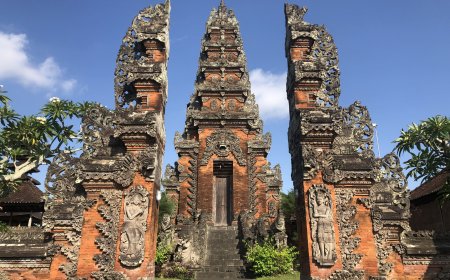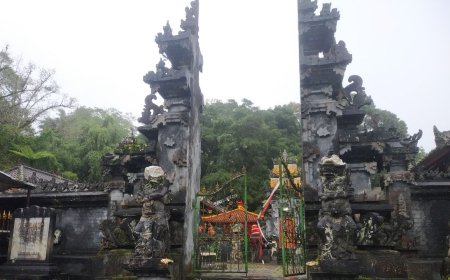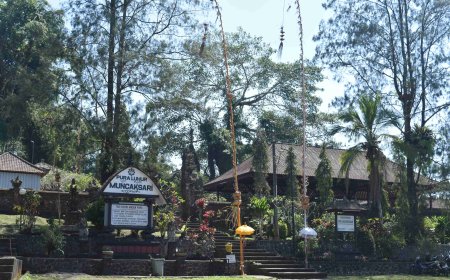Goa Gajah, Ancient Temple in Bali
Bali, one of the islands in Indonesia, known for its unparalleled charm. It's not only renowned for its stunning natural beauty but also for its remarkable cultural richness. Bali is also home to many sacred temples with a rich history, and Goa Gajah is one of them, an awe-inspiring historical and religious site.
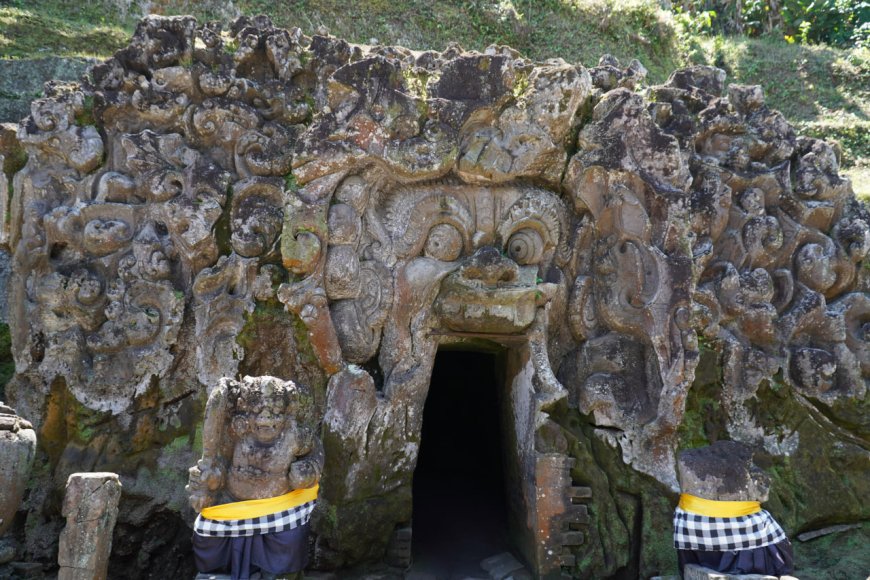
Goa Gajah (Source: Editorial Collection)
Goa Gajah is located in the village of Bedulu, Gianyar, approximately 6 kilometers from Ubud, one of Bali's famous tourist destinations. It sits on the main Denpasar-Tampaksiring road, precisely at the confluence of small rivers in the area. Its strategic location makes it easily accessible for tourists to explore the cultural and historical beauty of Bali. The entrance fee to Goa Gajah is Rp. 30,000 per person. Although the temple is open to the public, there is an exception where menstruating women are not allowed entry to maintain the sanctity of this sacred place.
Goa Gajah, also known as "Gua Gajah," is believed to have originated from the term "Lwa Gajah," referring to a place of meditation or a Buddhist temple used by Buddhist monks. The name Goa Gajah is recorded in the Negarakertagama manuscript compiled by Mpu Prapanca in 1935 CE. The term "Lwa" or "Lwah" itself means river, indicating that the meditation place is located by the Gajah River. "Ser Ring Air Gajah" is a phrase found in a 944 Saka inscription, which means The Leader of the Gajah Water Subak.
This cave is estimated to have been built in the 11th century during the reign of King Sri Bedahulu. In 1923, L.C Heyting, a young official from Singaraja, discovered the Trilingga statue, the Ganesha Arch, and the Hariti statue or Men Brayut statue. Subsequent research was conducted in 1925 by Dr. W.F Stutterheim and further archaeological investigations in 1950 by Indonesian archaeological sites. From 1954 to 1979, a small pool and six female statues were discovered in front of the cave entrance.
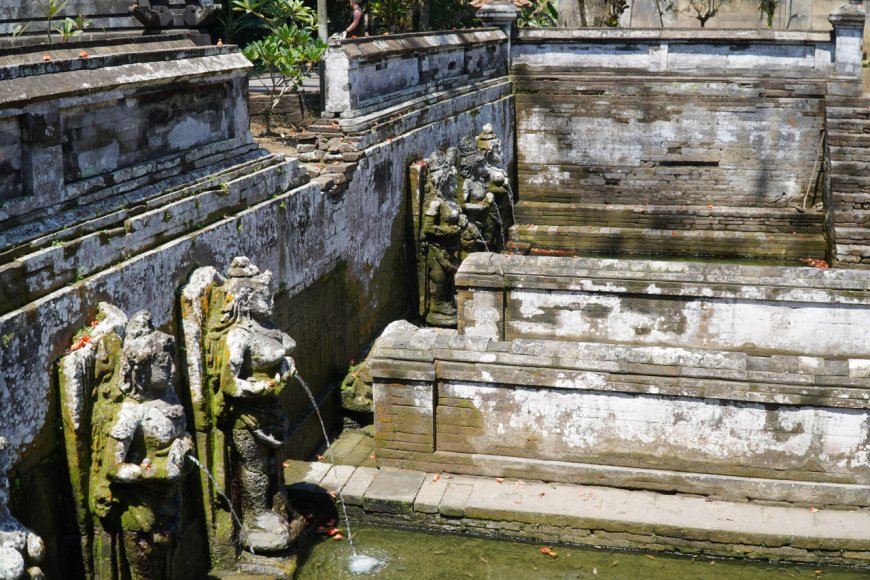
Six Female Statues (Source: Editorial Collection)
When visiting Goa Gajah, the architectural wonders within it can captivate anyone who beholds them. This is due to the entrance of the cave adorned with a large elephant's mouth, adding a mystical element to the place. Furthermore, the temple's architecture, blending Hindu and Buddhist elements, creates a unique cultural harmony and reflects the high religious tolerance in Bali.
The Goa Gajah Temple complex has two unique areas, in the north and south which are bordered by a trench. Based on a review of the architecture, the northern complex shows signs of Shivaism and the southern part has Buddhist characteristics. This is why Goa Gajah has various statues and artifacts which are symbols of the two religions. Apart from that, in the past it was also believed that these two complexes were used by Shiva and Buddha priests in the same period. This shows that both religions can coexist.
In the northern part, there are several statues which are a legacy of Hindu-Shivaism, namely the Ganesha statue, the Tri Lingga statue, the Widyadara-Widyadari fountain statue, the Buddha statue and also the Men Brayut statue. Meanwhile, the Southern Region, which is a legacy of Buddhism, has thirteen tiered stupas and the Hermitage of Queen Buddha temple. Each statue is decorated with a fountain of water that comes from the confluence of two springs which are considered very holy by the Balinese Hindu community.
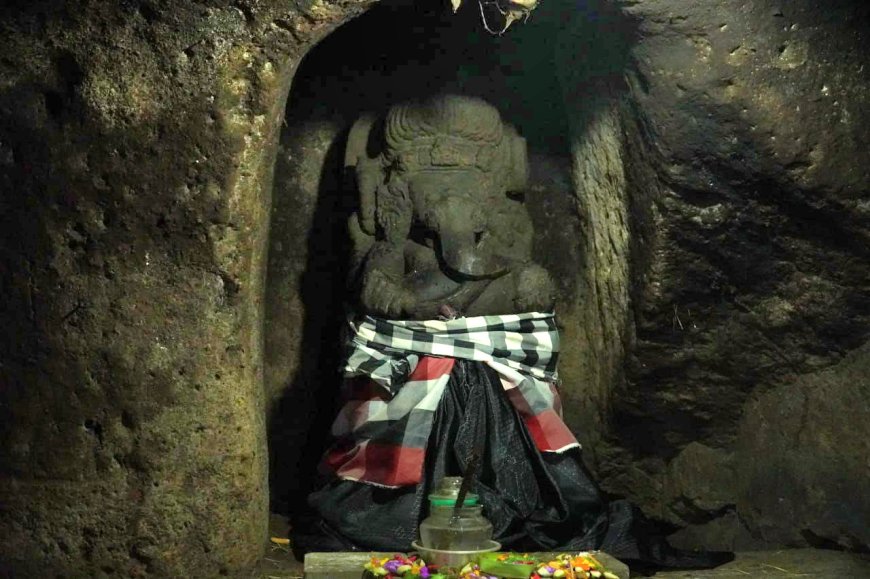
Arch Ganesha (Source: Editorial Collection)
Upon entering the temple area, you'll see several buildings used for religious ceremonies, including Pharyangan, Limas Sari, Gunung Agung, Gunung Lebah, Persimpang Ratu Ngurah, Panglurah Agung, Pura Taman, and Ratu Brayut. These structures are constructed from volcanic stone and have a nine-meter-long corridor.
Additionally, the Lembah Tukad Pakung Complex can be found in the area around the temple. This area holds ancient remnants such as building fragments, hermitage niches, three-tiered paying relief, fragments of Buddha statues, branching stupa reliefs, and decorative reliefs carved on various stone blocks.
Goa Gajah Temple reflects the fundamental concept of cultural fusion between Hinduism and Buddhism. Archaeological findings at the Goa Gajah site provide tangible evidence of religious tolerance that existed in the past and continues to be preserved in Bali today. The harmony created at this site makes it a highly appealing destination to visit.



















































